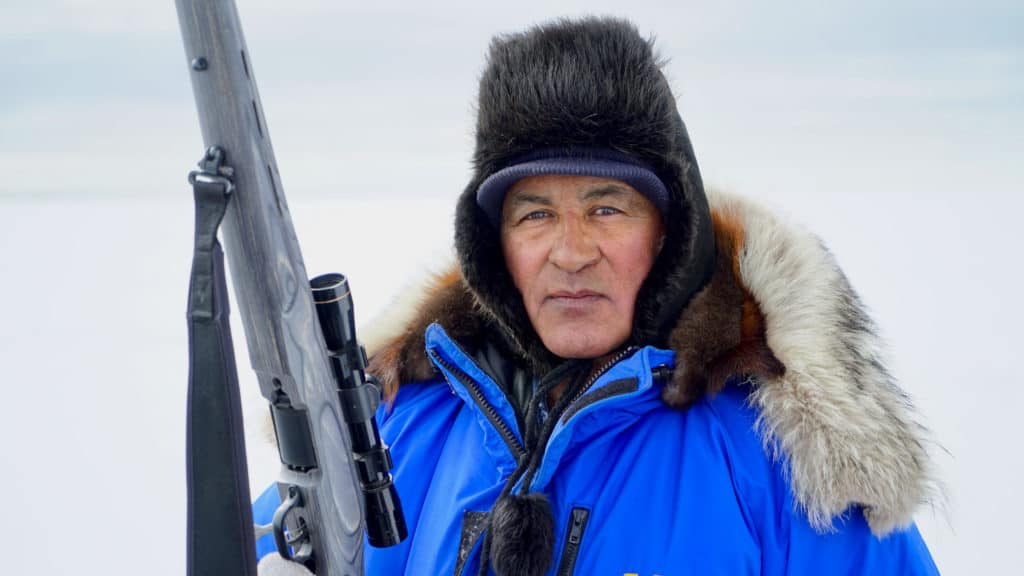Share this article
Climate change changes Indigenous seal hunting
A changing climate resulting in reduced sea ice coverage is causing Indigenous seal hunters who rely on the marine mammals for subsistence to change their methods. As the ice continues to change, their ability to hunt may be threatened altogether.
In the Native Village of Kotzebue in Alaska, the Iñupiaq people rely on bearded seals (Erignathus barbatus)—or what they call ugruk—for food and clothing. But in recent years, the Indigenous people began to notice their seal hunting season was shrinking. Sometimes the season was shorter. Other times, the season came earlier than usual.
A team of marine biologists, oceanographers, ethnographic filmmakers, Iñupiaq elders and community members got together to find out why these changes were occurring. They published a study on their findings in Environmental Research Letters.
“One of the really unique and special things about this paper—and certainly something transformative for me in terms of how I do science—is this research is grounded in Indigenous knowledge,” said Donna Hauser, a research assistant professor and marine ecologist at the International Arctic Research Center at the University of Alaska Fairbanks and co-lead author of the study.
Hauser’s co-lead author, Alex Whiting, directs the Native Village of Kotzebue’s Environmental Program. Whiting had been keeping a journal on what he was seeing regarding seal hunting since 2002 when he had an inkling things were changing. In his journal, he noted local weather, bearded seal activity and hunting pursuits, taking note of when ice would break up in Kotzebue Sound in the spring, allowing the hunters to launch their boats. The research team used these journals to quantify how the length of the spring hunting season has shrunk between 2003 and 2019.
The researchers also turned to Indigenous knowledge. Elders on the research team could tell them about how sea ice conditions affects bearded seal availability and hunter’s ability to access seals. They then used remotely sensed satellite data from the same years of data to collection to see what sea ice looked like. “We could quantify that sea ice was breaking up significantly earlier in the Kotzebue Sound over time. In particular, what declined was the number of days of hunting,” Hauser said.

Roswell Schaffer, an Iñupiaq elder and hunter from Kotzebue, Alaska, who helped co-author the study, hunts for bearded seals in May 2019. Credit: Sarah Betcher/Farthest North Films
The team found that in the past, when there was consistent sea ice coverage, hunters would take longer trips, camping out on the ice for multiple days. “Ugruk might be harder to find and more dispersed on complex or dense ice floes,” she said. But more recently, hunters are taking shorter, faster trips, especially in 2019. “In 2019, there was very little ice in the Chukchi and Bering Seas,” she said. “The sea ice coverage was unprecedented that year.” That year, ice floes grounded closer to the town on a sandbar, allowing hunters to make short, frequent trips multiple times a day.
That was partially beneficial to the hunters who wouldn’t have to use as much gas. In addition, seals aggregated on the little available ice habitat, providing ample resources to the people. But at the same time, the hunters were having shorter seasons, leaving room for less flexibility.
But the sea ice may change even more in the future, Hauser said. Ice may end up farther from the shore, making it a much harder effort to search for seals, resulting in lower success for the hunters. “Absolutely, continued monitoring is a great thing,”
But another take home from the research, she said, is the importance of Indigenous knowledge.
“I think one of the biggest take homes about how to proceed comes back to how we did our research, creating the space for more Indigenous-led and self-determination in the entire research process,” she said. “It has led to more inclusivity and potentially can lead to equitable ways of incorporating Indigenous perspectives in the face of these rapid changes in the Arctic.”
Header Image: A bearded seal sits on the ice edge in Kotzebue Sound. Credit: Jessie Lindsay, NMFS MMPA Permit No. 19309








